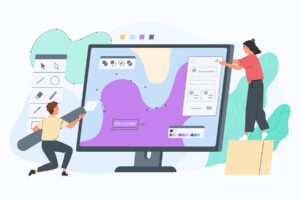10 fundamental abilities for Android engineers

Versatile applications have altered our lifestyle, from the manner in which we maintain our organizations, teach, reproduce and track down diversion! This has made portable application improvement one of the most captivating and coolest positions around. Android is to be sure the unquestionable head of worldwide portable piece of the pie. This market initiative suggests high professional stability for designers.
As Android applications keep on interfacing individuals across the globe and empower clients to participate in additional imaginative and fascinating ways, a profession in Android improvement has become perpetually enhancing, satisfying and popular to the worldwide economy. To turn into an effective designer, you really want to foster a few abilities and apply them at the ideal locations and time to give the best insight to your clients.
Here are the 10 fundamental abilities you really want to prevail as an designer.
1. Android establishments
The most essential structure block of Android improvement is the programming language. The most favored dialects to make Android applications are Kotlin and Java. You can utilize either Kotlin or Java — or even both simultaneously — to create applications. You should be know about the center ideas of either of these two programming dialects, including essentials and language structures, assortment system, simultaneousness and multithreading, generics and practical programming.
To plan formats (UI) in Android, we use XML. Similar as HTML, XML is likewise a markup language and represents eXtensible Markup Language. After making of these XML Formats, they are connected to Kotlin/Java documents where business rationale is compose.
To plan consistent XML formats and compose business rationale in a coordinated climate, there exists a helpful device known as Android Studio. Android Studio utilizes Gradle, a high level form tool stash, to computerize and deal with your construct cycle. To coordinate Gradle in Android studio there exists a module known as the Android module for Gradle.
Before you begin, you want to comprehend what Gradle is and how to utilize it explicitly for overseeing outer conditions.
Gradle and Android modules run autonomously of Android Studio. This implies you can fabricate your Android applications from inside Android Studio, the order line on your machine, or on machines where Android Studio isn’t introduce (like nonstop coordination servers). On the off chance that you are not utilizing Android Studio, you can figure out how to assemble and run your application from the order line.
2. Android intuitiveness
Client association with Android applications ought to be considere with most extreme need. Answering occasions by utilizing callbacks, carrying out proper motions, for example, simplifying, giving right console to client info and involving dish and zoom perfectly locate assumes a pivotal part in giving the consistent client experience. These are minuscule however exceptionally helpful in further developing client collaboration. Most importantly, these client intuitiveness happens in an part known as Action.
A Movement is a solitary, centere thing that the client can do. Practically movements of every kind cooperate with the client, so the Action class deals with making a window for you in which you can put your UI.
The Android gadget accompanies different screen setups. Screen direction is one of them. It very well may be either picture or scene. Every Movement can exist in one or the other picture or scene mode. At the point when the screen is turne the ongoing action is obliterate and reproduce in another direction. The strength of an Action ought to continuously be kept up with when screen direction changes.
3. Android UI
An application is deficient assuming it needs present day UI. An application might contain helpful functionalities, yet in the event that it neglects to adjust to present day UI rules, it is at last ill-fate to fall flat.
Utilizing RecyclerView to execute records and matrices, involving ConstraintLayout for planning complex designs, applying movements to improve client experience, utilizing suitable menus, keeping Material plan rules and utilizing vector drawables rather than raster illustrations are a couple of the fundamental standards that each engineer should continue in their applications.
While planning formats one should not neglect to consider the numerous screen type gadgets. The equivalent application ought to appear to be unique for various gadgets. For instance, the screen on a tablet ought to show double sheet designs to really use a widescreen. While on a cell phone it ought to utilize single sheet. This conduct can be accomplished by utilizing Sections. Furthermore, in a few cases, you could have to modify Perspectives that suit your need. This can be accomplished by planning custom parts for your Perspectives.
4. Executing route
Route alludes to the connections that permit clients to explore across, into and back out from the various bits of content inside your application. There are different UI components that permit you to carry out powerful UI route.
The most fundamental one is the application bar which is popularly known as Toolbar. On your Toolbar, you can add a popup menu, menu symbols and add a route cabinet symbol.
This route cabinet symbol assists you with opening and close the route cabinet which is one more component to execute viable route. The route cabinet permits you to add extra menu things which can assist you with trading sections in your ongoing Action or play out a few other important activities.
Another route component is a BottomNavigationView which permits you to switch between various Sections in similar Movement by utilizing tabs at the lower part of the screen.
Assuming that you want to utilize tabs connecte to the Toolbar and swipe between Pieces (various pages), then, at that point, ViewPager ought to be your decision.
Client expectation is the main part of route. The client should send off new Action, move back to the past Action or even offer information to some other application. These goals can be accomplishe by involving Purposes in Android. Assuming you know your objective Movement utilize Unequivocal Aim in any case utilize Verifiable Expectations. You are constantly permitte to design your aims.
Most importantly, Jetpack’s Route part assists you with carrying out route, from basic button snaps to additional perplexing examples, for example, application bars and the route cabinet. You should investigate this part before you begin carrying out route in Android.
5. Android testing
Clients cooperate with your application on different levels, from compressing a Submit button to downloading data onto their gadget. Likewise, you ought to test an assortment of purpose cases and communications as you iteratively create your application. The most usually utilize testing libraries are Expresso, Junit, Mockito, Robolectric and UI Automator.
6. Working with information
Information is a significant piece of your application and should not be disregarde. You might have to get information from the server, question information from the nearby data set, save client inclinations and do record taking care of.
To utilize neighborhood data set, use Room data set, which is the piece of Android Jetpack’s design part. You should share your data set outside your application safely utilizing ContentProvider.
To save a limite quantity of information, for example, key-esteem coordinates or compose objects you can utilize Jetpack’s DataStore, which utilizes Kotlin coroutines and Stream to store information.
If you have any desire to tie your UI parts in your designs to an information source in your application utilizing a revelatory organization, use Information Restricting Library.
To deal with documents in your application, you can exploit huge record framework APIs gave to you.
Most importantly, to get to the information over network (for example while consuming REST APIs), use Retrofit 2 library, which is a gift from Jake Wharton to all Android designers.
7. Notices
Notices are one of the most incredible ways of expanding client commitment. It shows up beyond your application’s UI to furnish the client with updates, correspondence from others or other opportune data from your application. Clients can tap the warning to open your application or make a move straightforwardly from the notice. You can make a notice, modify its design, add activity to it and even gathering various Warnings utilizing Notice channels.
8. Firebase on Android
In the event that you disdain being a backend designer, Firebase on Android is an ideal way for you. Firebase is a versatile stage that assists you with rapidly growing great applications, develop your client base and bring in more cash. Firebase gives a few utility elements to make the existence of an designer simple.
To make your application noticeable in Google search you can utilize Firebase Application Ordering Programming interface. You can utilize distribute storage and cloud firestore to store information in your server. On the off chance that you really want to consequently run backend code in light of occasions set off by Firebase elements and HTTPS demands, use Cloud Capabilities. Next is the Firebase Cloud Informing (FCM) that allows you to push notices to your clients. Utilizing FCM, you can tell a client application that new email or different information is accessible to match up. Use Firebase Crashlytics, which is a lightweight, ongoing accident columnist that helps you focus on and fix solidness issues.
Assuming you have at any point involve profound connections in your application, attempt Dynamic connections. With Dynamic Connections, your clients get the most ideal that anyone could hope to find insight for the stage they open your connection on.
You should investigate other Firebase highlights, for example, Firebase Welcomes, Firebase Execution Observing, Firebase Distant Config, Far off Config and A/B Testing.
9. Android security
Android has implicit security includes that altogether diminish the recurrence and effect of utilization security issues. You can safeguard the client’s protection by utilizing consents. Share information safely by utilizing mark base authorizations. Handle information security by utilizing inward capacity, outer capacity and ContentProviders warily. As a matter of course, never trade your part, for example, ContentProvider, Administration or BroadcastReceiver, except if you want to.
Android has restricte the capacity of WebView to least usefulness to stay away from web security issues, for example, cross-webpage prearranging (JavaScript infusion). Yet at the same time you should be wary and limit the recurrence of asking your client’s accreditation. All things considere, utilize an approval token and revive it at standard spans.
10. Git: Rendition control framework
Git is free and open-source programming utilized for variant control. Allows you to explore different avenues regarding new application elements and coding methods with certainty. You can chip away at new insane thoughts for your undertaking while your past working duplicate stays free from even a hint of harm. The second you might understand you are advancing your task off course, you can reestablish your past variant, bother free and course right.


